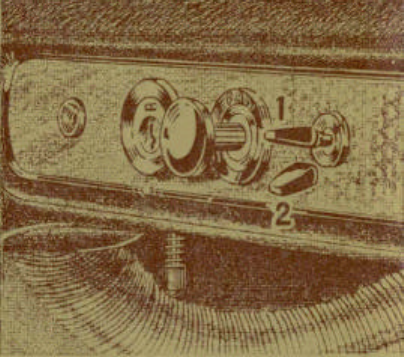
Source – Volvo AB, Göteborg, Sweden page 15(35)
Reprint 2001 Karl Eric Målberg
Overdrive
The overdrive (model 18335) which can
be engaged when you are running in
fourth speed, is operated by means of a
switch on the instrument panel. The
overdrive is engaged when the switch is
moved up. No extra operation of the
clutch or accelerator are normally
necessary when engaging and
disengaging the overdrive. Engagement
is, however, easier if the accelerator is
kept depressed. When shifting from
overdrive to forth speed, light pressure
on the clutch ensures a smother shift.
When the overdrive is engaged, the
warning lamp on the instrument panel
lights up.
Advice concerning driving
Starting in a garage
Always open the garage doors when you start the car in your garage. The reason for
this is that the exhaust gases from the engine always contain the poisonous gas
carbon monoxide, which is particularly dangerous, since it is both invisible and
odourless.
Air containing only 0.2% carbon monoxide can be fatal if it is breathed in for half an
hour
Oil pressure
The oil pressure is dependent on the oil temperature and the engine speed. If the oil
pressure should go down to zero at any time, the engine must bee stopped
immediately. After very hard driving with oil temperature up to about 120C (250F) the
oil pressure at idling speed can go down to 0.5 kg/cm3 (7lb/sq.in.) which is however
quite normal.
Braking
Try to use the brakes a little as possible. Instead use the engine as a brake by
releasing the accelerator pedal in good time. Violent braking is only justified in
dangerous situations and even in such cases the wheels should never be locked.
Remember that the best braking result is obtained if the wheels are permitted to
rotate slightly.
Even acceleration and gently braking are typical characteristics of a good driver and
also result in the most economical running.
Tires
When the car is delivered, it is fitted with tires that stand up to the stresses occurring
during high-speed driving. It is however, very important to maintain the correct air
pressure in the tires, particularly when you are driving long distances at a high
average speed. It is better to have too much than too little air in the tires. A tire
becomes heated up more quickly if it contains too little air. If the temperature in the
tires becomes excessively high, the cord and rubber start to separate from each
other and this can have catastrophic consequences.


















